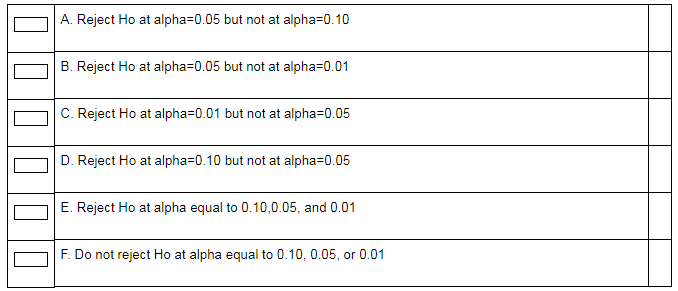Suppose you conduct a test and your p-value is equal to 0.016. What can you conclude?

Concepts and reason
Null hypothesis: The null hypothesis states that there is no difference in the test, which is denoted by ![]() . Moreover, the sign of null hypothesis is equal, greater than or equal and less than or equal.
. Moreover, the sign of null hypothesis is equal, greater than or equal and less than or equal.
Alternative hypothesis: The hypothesis that differs from the is called alternative hypothesis. This signifies that there is a significant difference in the test. The sign of alternative hypothesis is less than , greater than , or not equal .
P-value: The probability of getting the value of the statistic that is as extreme as the observed statistic when the null hypothesis is true is called as P-value.
Fundamentals
Rejection rule based on p-value:
- If
 , then reject the null hypothesis.
, then reject the null hypothesis. - If
 , then do not reject the null hypothesis.
, then do not reject the null hypothesis.
Answer:
From the given information, the p-value is 0.016.
Conclusion for ![]() .
.
Use the significance level,![]()
The p-value is less than the level of significance.
That is, ![]() .
.
Therefore, by the rejection rule, reject the null hypothesis.
Conclusion for ![]() .
.
Use the significance level,![]()
The p-value is greater than the level of significance.
That is, ![]() .
.
Therefore, by the rejection rule, do not reject the null hypothesis.
Conclusion for ![]() .
.
Use the significance level,![]()
The p-value is less than the level of significance.
That is,![]() .
.
Therefore, by the rejection rule, reject the null hypothesis.
Hence, the options (A), ( C), (D), (E) and (F) are incorrect.
The p-value and the level of significance are compared to check if the null hypothesis is rejected or not. If p-value is greater than the level of significance then the null hypothesis is not rejected otherwise it is rejected.